
Timeline: 1907
[caption id="InBritainTheseDays_img1" align="aligncenter" width="1024"]
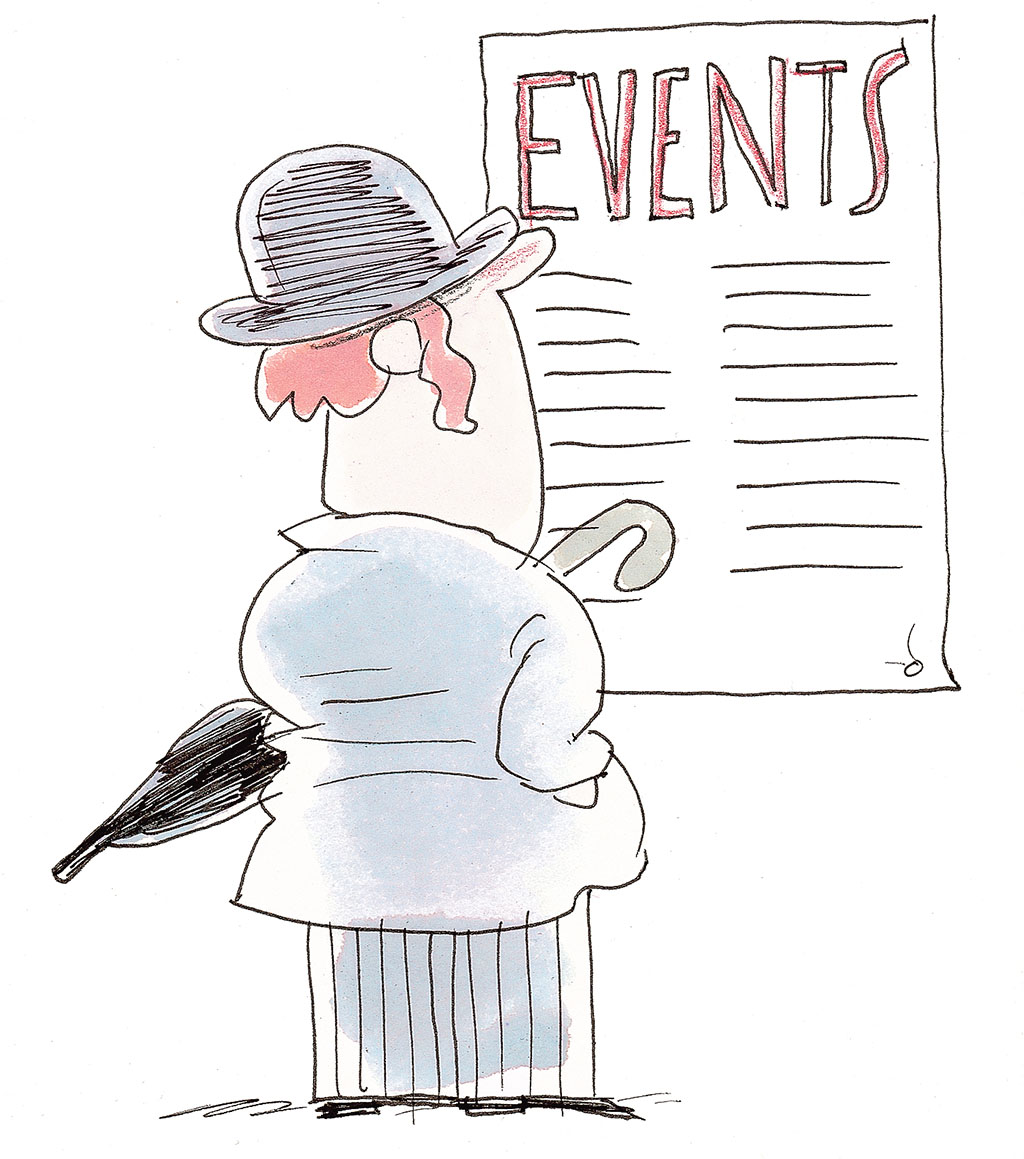
[caption id="InBritainTheseDays_img2" align="aligncenter" width="1024"]
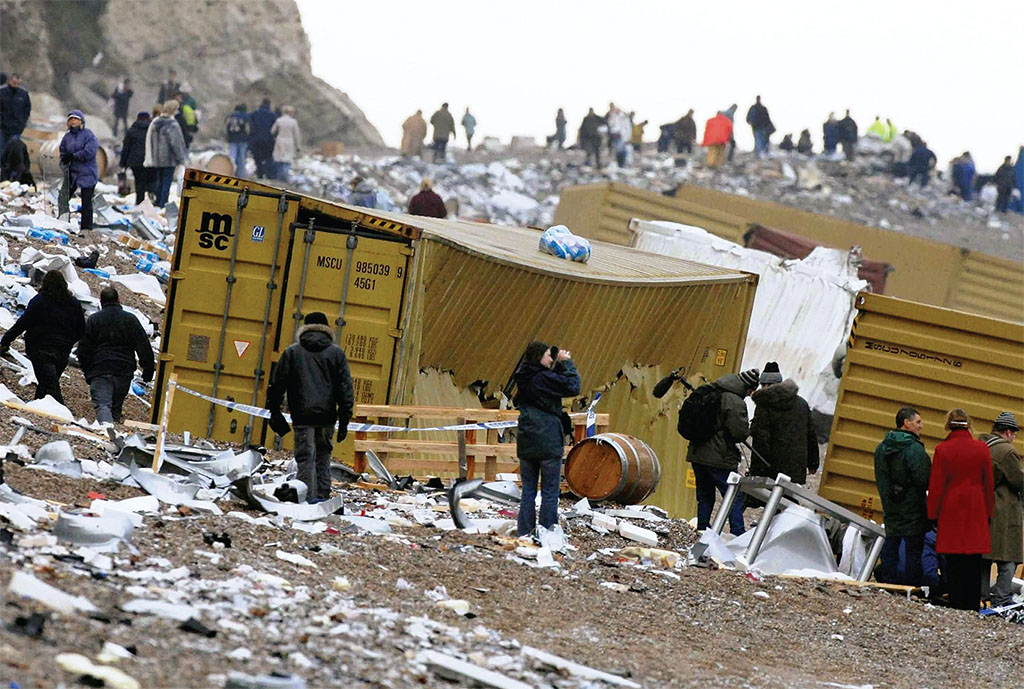
BARRY BATCHELOR/PA/EMPICS
WRECKING ON THE COAST
SEEMED LIKE OLD TIMES on the southwest coast when winter storms battered Britain with relentless gale force winds, rain and stormy seas. Along the East Devon Heritage Coast near Sidmouth, the container ship MSC Napoli foundered and was run aground to keep it from sinking outright. Scores of shipping containers loosed from the vessel broke open and washed ashore at Branscombe.
Just like the wreckers of old (see “Daphne Du Maurier’s Cornwall,” British Heritage, March 2007), the goods on the beach attracted hundreds of scavengers over three days. Authorities seemed powerless to deter the rummaging of the salvage washed ashore. When police closed off roads to the beach, treasure-seekers simply walked several miles across country. The best prizes were the £15,000 BMW motorcycles, seemingly available for the taking. Wine, face cream, nappies, wooden barrels and auto parts were among the available plunder. At night, the beach became the scene of an impromptu party, complete with crackling bonfires, people singing and bottles passed around.
The Merchant Shipping Act of 1995 makes it an offense to remove items from a wreck and refuse to surrender them. Modern-day salvagers must fill out a form telling authorities what they took, and store the goods 28 days in case the owners want them back. There is some skepticism that authorities will get full compliance from salvage party participants. Meantime, officials claim it may take a year to retrieve the some 2,300 containers either still on the ship or lying on the sea bed just offshore. The old crowd at Jamaica Inn would be so proud.
A NEW, OLD VILLAGE AT STONEHENGE
JUST A COUPLE OF MILES from Stonehenge as the crow flies, at Durrington, sits the little-visited Neolithic site known as Wood-henge. Recently, archaeologists discovered Wood-henge to be perhaps the epicenter of what may prove to be the largest Neolithic village ever discovered in Britain. Ongoing excavations at Durrington have already revealed the remains of eight stone houses that have survived intact. Geophysical surveys have identified many other probable dwellings. Archaeologists think there could have been more than 100 houses at the site.
Researchers speculate that the village, dating from the era when Stonehenge was built (circa 2500 BC), could have been used by Stonehenge’s builders. From the usual detritus of archaeological digs such as pottery, animal bones and flint, they have concluded that the village was occupied only seasonally. It will be interesting to follow the ongoing work for what light it may indeed shed on the ancient mystery of Stonehenge’s construction and purpose. One suggestion proposes that Stonehenge and Durrington comprised an elaborate complex for funerary rituals celebrated with great feasting in the midwinter.
SPEAKING OF OLD BONES
IN 1919 THE SPANISH FLU killed Sir Mark Sykes, 6th baronet and lord of the Manor of Sledmere, Yorkshire. The baronet caught the bug while a diplomat at the Versailles Peace Conference. His body was shipped back to Britain in a lead-lined coffin, designed to isolate the virulent virus, and was buried in Sledmere. Now, medical researchers have jumped the legal hoops to exhume Sir Mark, believing they may find long-sought samples of the virus in his DNA.
[caption id="InBritainTheseDays_img3" align="aligncenter" width="273"]
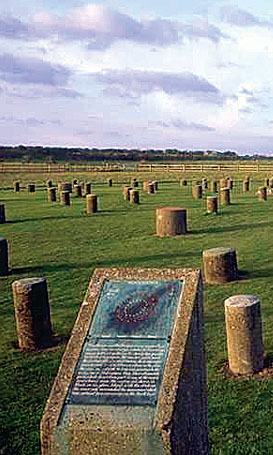
COURTESY OF ENGLISH HERITAGE
Scientists believe that analysis of Sir Mark’s genetic material could yield valuable results in understanding the virus and aid in combating the present bird flu strains. This isn’t the first time genetic detectives have sought clues in the medical past. British Heritage readers may remember the ongoing search for the “survival gene” in descendents of the plague survivors of Eyam (see “New Hope From the Plague Village,” May 2006).
ONE BOOK, ONE EDINBURGH
SOME 25,000 FREE COPIES of Robert Louis Stevenson’s classic novel Kidnapped have been distributed throughout Edinburgh in the city’s biggest literacy project in years. Schools and cafes, libraries and community centers have been enlisted in the One Book, One Edinburgh scheme to get the city reading. Copies of the classic Scottish tale have even been deliberately strewn in public places in hopes that they would get picked up and read.
After being named the world’s first UNESCO City of Literature in 2004, the city’s UNESCO City of Literature Trust has made the campaign a flagship project. More than 30 related events such as family fun days and drama workshops have been promoted across the city.
Stevenson’s timeless story of young Davie Balfour’s adventures was chosen for its local interest and its almost universal appeal to both children and adults. Organizers hope the project will encourage a love of reading in the public and increase the profile of Edinburgh’s rich literary heritage.
CORE BRITISH VALUES
IN A REPORT COMMISSIONED by Education Secretary Alan Johnson, British schools were found wanting in teaching the core values of citizenship: free speech, the rule of law, respect for equal rights and mutual tolerance. Though citizenship lessons have been a compulsory part of the curriculum since 2002, the review found that there was not enough emphasis on UK identity and history. Alongside teaching cultural diversity, schools should “play a leading role in creating community cohesion,” according to Johnson.
The end result is that schools will henceforth be required to teach shared values and life in the UK in their citizenship lessons.
TERFEL’S SECOND GRAMMY WIN
WELSH OPERA SINGER BRYN TERFEL won this year’s Grammy award for best classic crossover album for his Simple Gifts. The award is Terfel’s second Grammy following the 1996 award for his album Opera Arias. Containing a broad mixture of secular and sacred songs, the collection includes music ranging from Mozart to Stephen Sondheim. “Simple Gifts was a joyous recording to make,” Terfel said, “full of the most beautiful music, and the experience shared with some great friends who also feature on the album. It’s a particular pleasure to win such a prestigious award for this recording. I’m delighted.” So are we; see “Beyond the Bookshelf.”
[caption id="InBritainTheseDays_img4" align="aligncenter" width="679"]
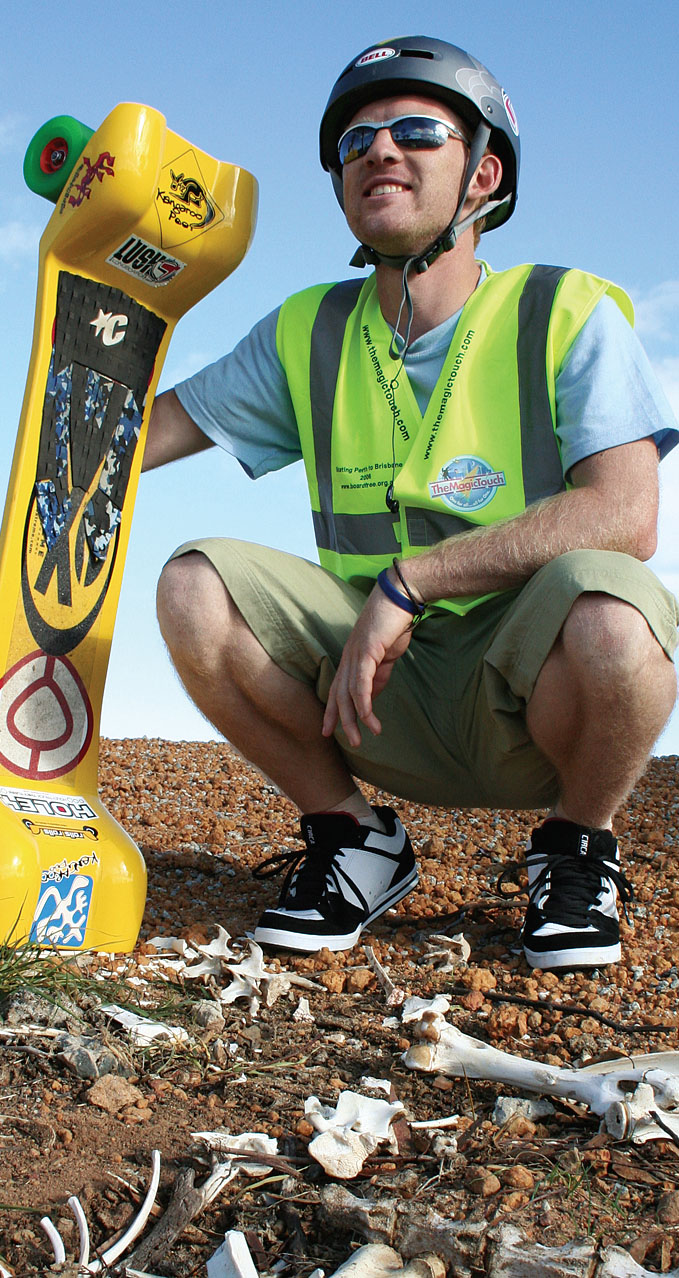
COURTESY OF DAVID CORNTHWAITE
REMEMBERING ROBERT BURNS
THE NATIONAL TRUST for Scotland has been awarded an £11.3 million grant from the Heritage Lottery Fund and the Scottish Executive to build a proposed new museum honoring Robert Burns. The Burns International Museum in Alloway, Ayrshire, will replace a rather decrepit museum in the village where the poet was born in 1759. Among other important Burns work, the museum will house the original manuscripts of “Auld Lang Syne” and “Tam O’Shanter.” NTS chairwoman Shonaig Macpherson said, “Burns’ life and his works are just as relevant today as they were when he lived and it is crucial that we make sure none of what he gave us is lost.”
TRUST APPEALS FOR CHRISTIE HOME
THE NATIONAL TRUST has launched an appeal for funds to restore Greenway, Agatha Christie’s longtime holiday home in Devon. Dame Agatha bought the estate in 1938 and used it until her death in 1976. Her daughter presented the house to the National Trust in 2000. Following a £5.4 million restoration, Greenway will be opened to visitors. The principal ground and first-floor rooms will be shown as they would have appeared in the 1950s.
SETTING THE RECORD STRAIGHT
A BRITISH ADVENTURER has become the first person to skateboard across Australia. It took David Cornthwaite, a 27-year-old graphic designer from Oxfordshire, five months to traverse the 3,600 miles between Perth and Brisbane. Swerving around huge snakes lying in the road, temperatures of 110 and a 500-yard road race with an emu are among his vivid recollections of weeks on the road. Cornthwaite wore out 13 pairs of shoes skating an average of 30 miles a day. His journey brings to Britain the world distance skateboarding record.
BRITAIN CONNECTS AND PLAYS HARD
THE FAMILY SPENDING REPORT, based on interviews with 7,000 families, reveals how the average British family spends its average of £443 per week. Households owning a computer rose to 65 percent (twice as many as have dishwashers), and for the first time, more than half of British families have an Internet connection. Some 79 percent of folk now carry mobile phones.
After transportation, leisure is the second greatest expense, averaging £58 a week. While £2.80 goes for fresh fruit, gambling accounts for £3.60 a week and £3.40 for package holidays abroad
[caption id="InBritainTheseDays_img5" align="aligncenter" width="1024"]
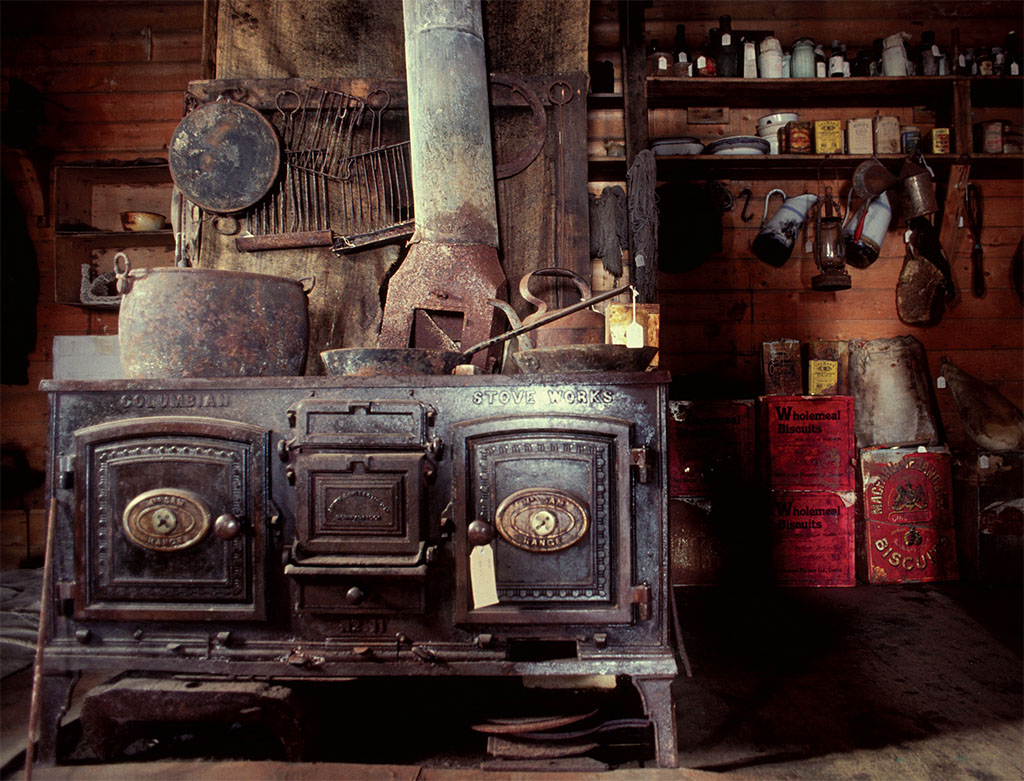
©ARCTOS IMAGES/ALAMY
HISTORY FROZEN IN TIME
A CAMPAIGN IS BEING WAGED to preserve the huts built by Antarctic explorers Captain Robert Scott and Sir Ernest Shackleton. Legendary adventurer Sir Edmund Hillary has added his voice to others calling for Britain to fund the preservation project. At 87, Sir Edmund flew to Antarctica as a guest at the 50th anniversary of Scott Base and traveled by helicopter to visit the huts of both explorers built as base camps for their attempts on the South Pole. The timber huts have indeed been frozen in time, complete with tinned food, bedding and equipment, but are deteriorating in the harsh conditions. While Sir Edmund is famously recalled as the first man to conquer Mount Everest, fewer probably remember that just four years later in 1958, he became the first person since Scott to reach the South Pole.
[caption id="InBritainTheseDays_img6" align="aligncenter" width="1024"]
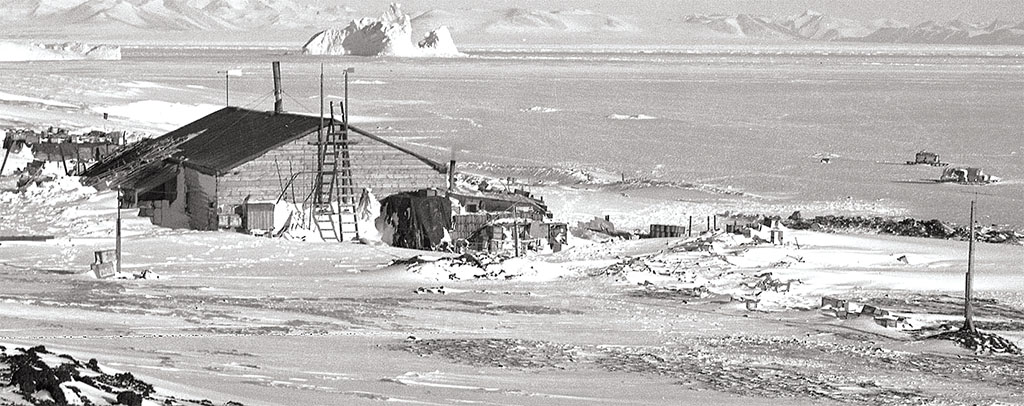
©POPPERFOTO/ALAMY
[caption id="InBritainTheseDays_img7" align="aligncenter" width="678"]
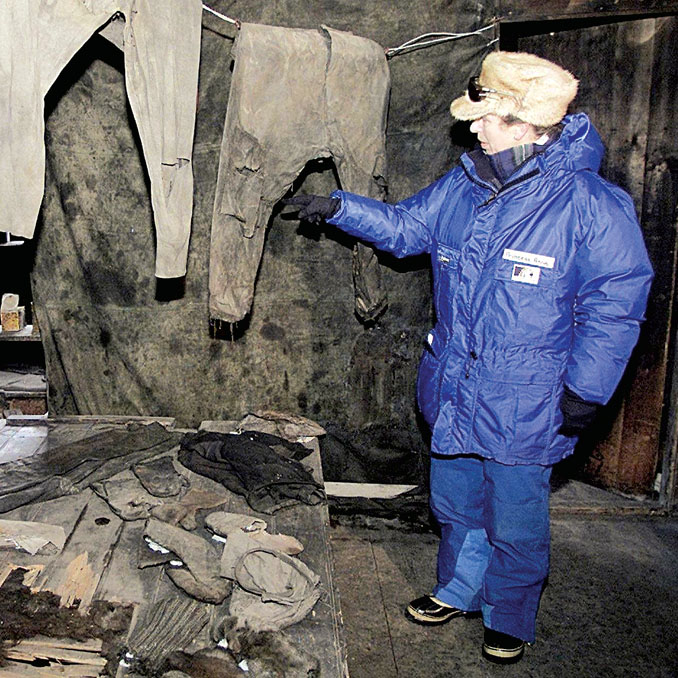
©MARK BAKER/REUTERS POOL/ERA/EMPICS





Comments